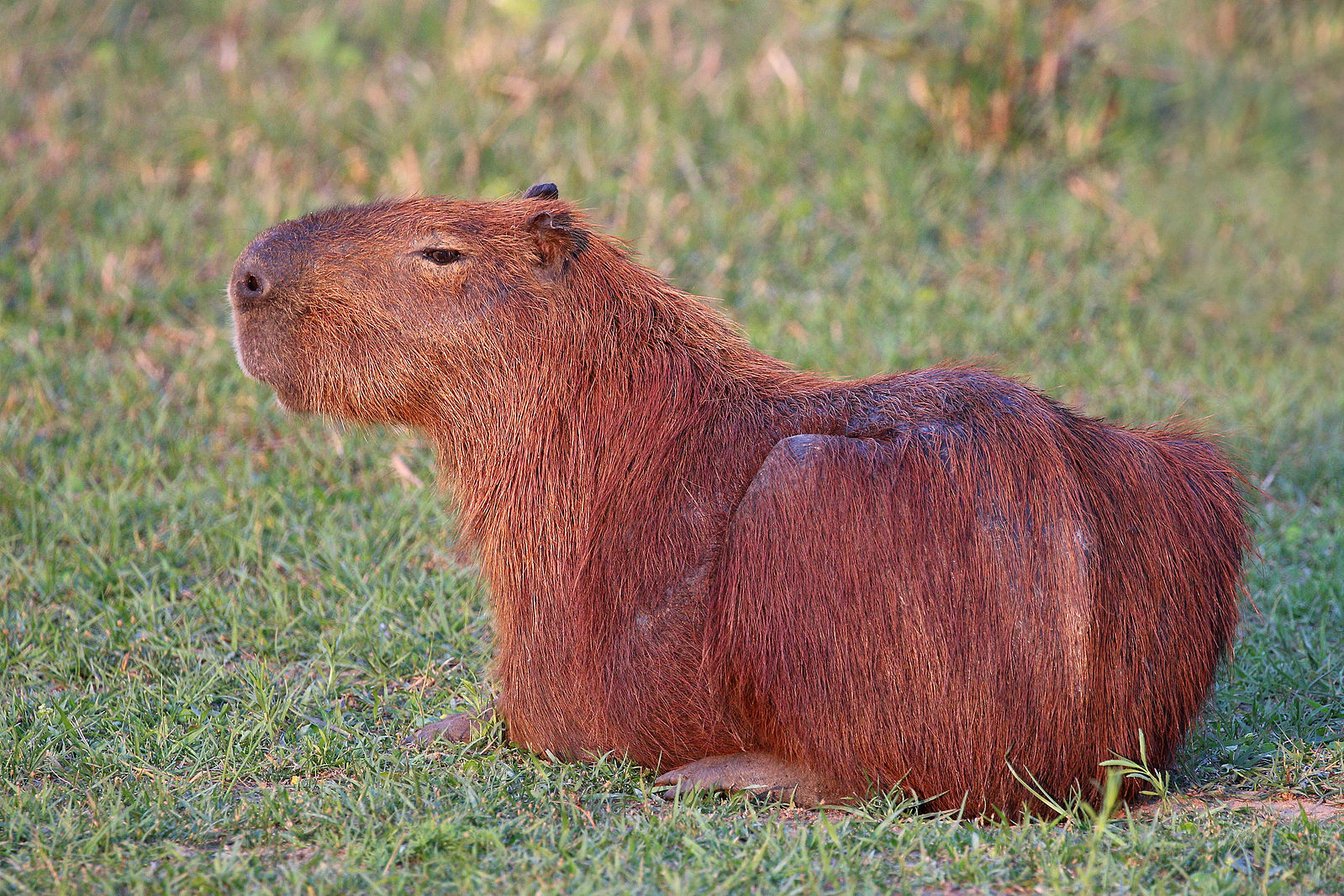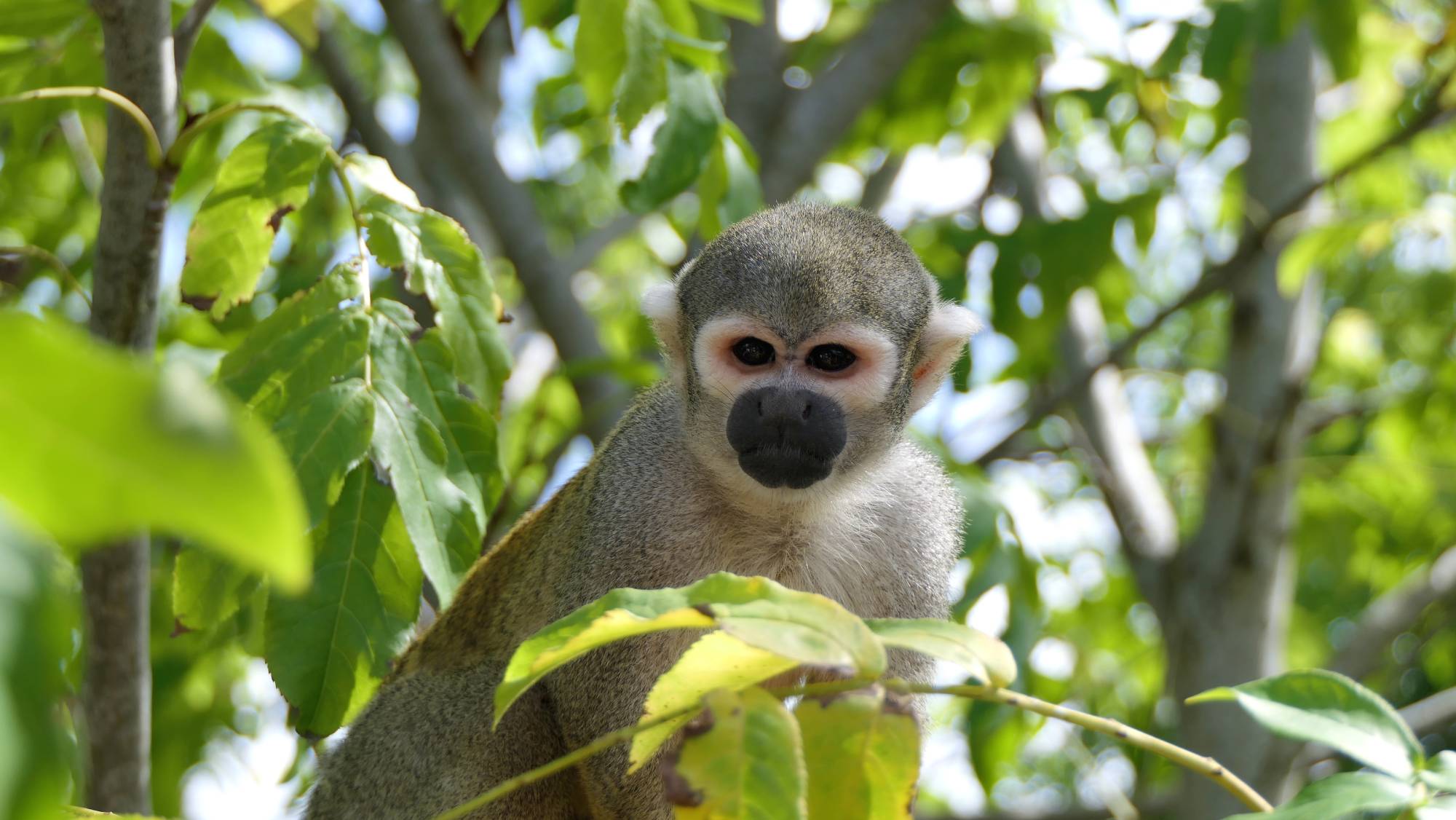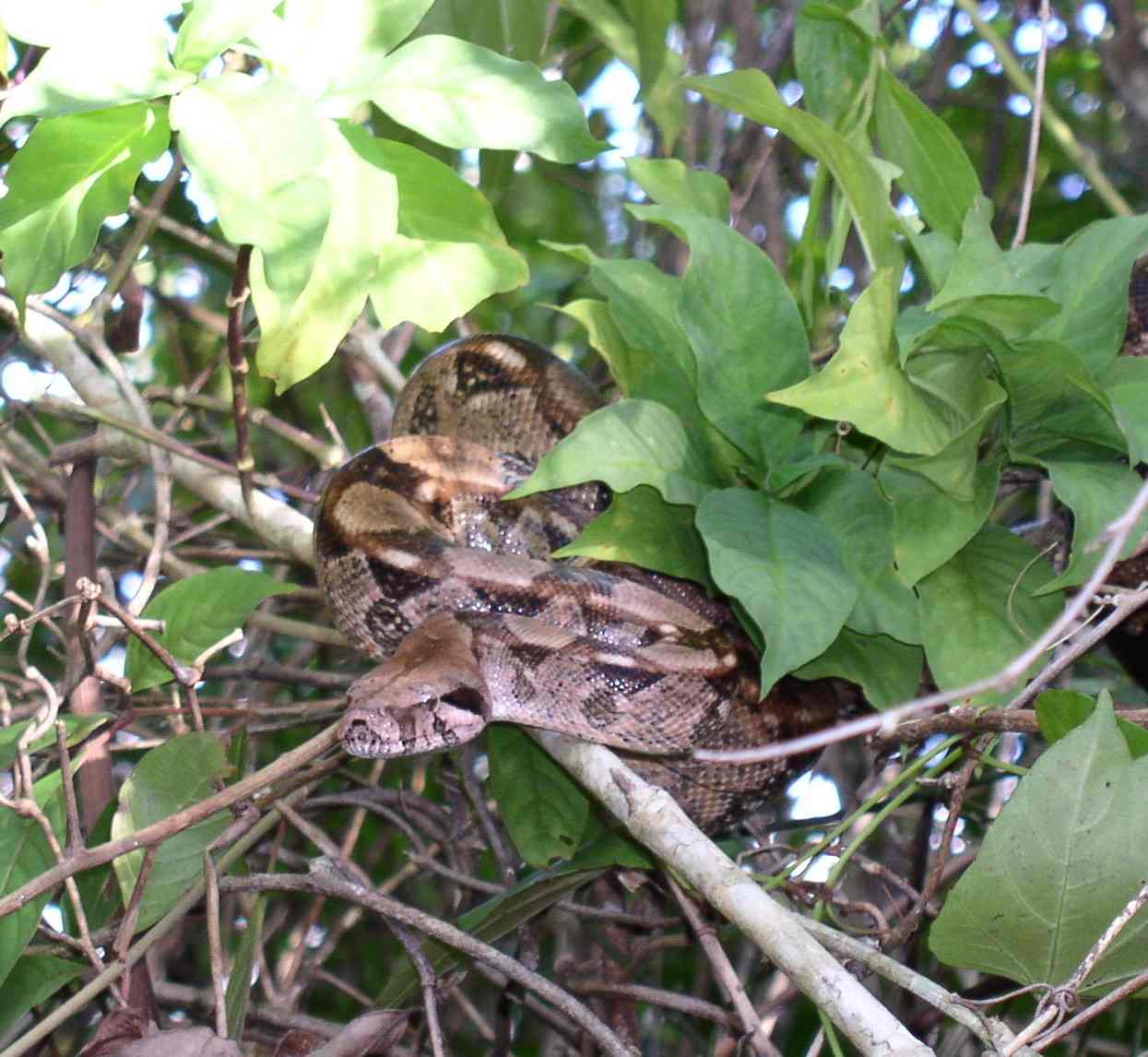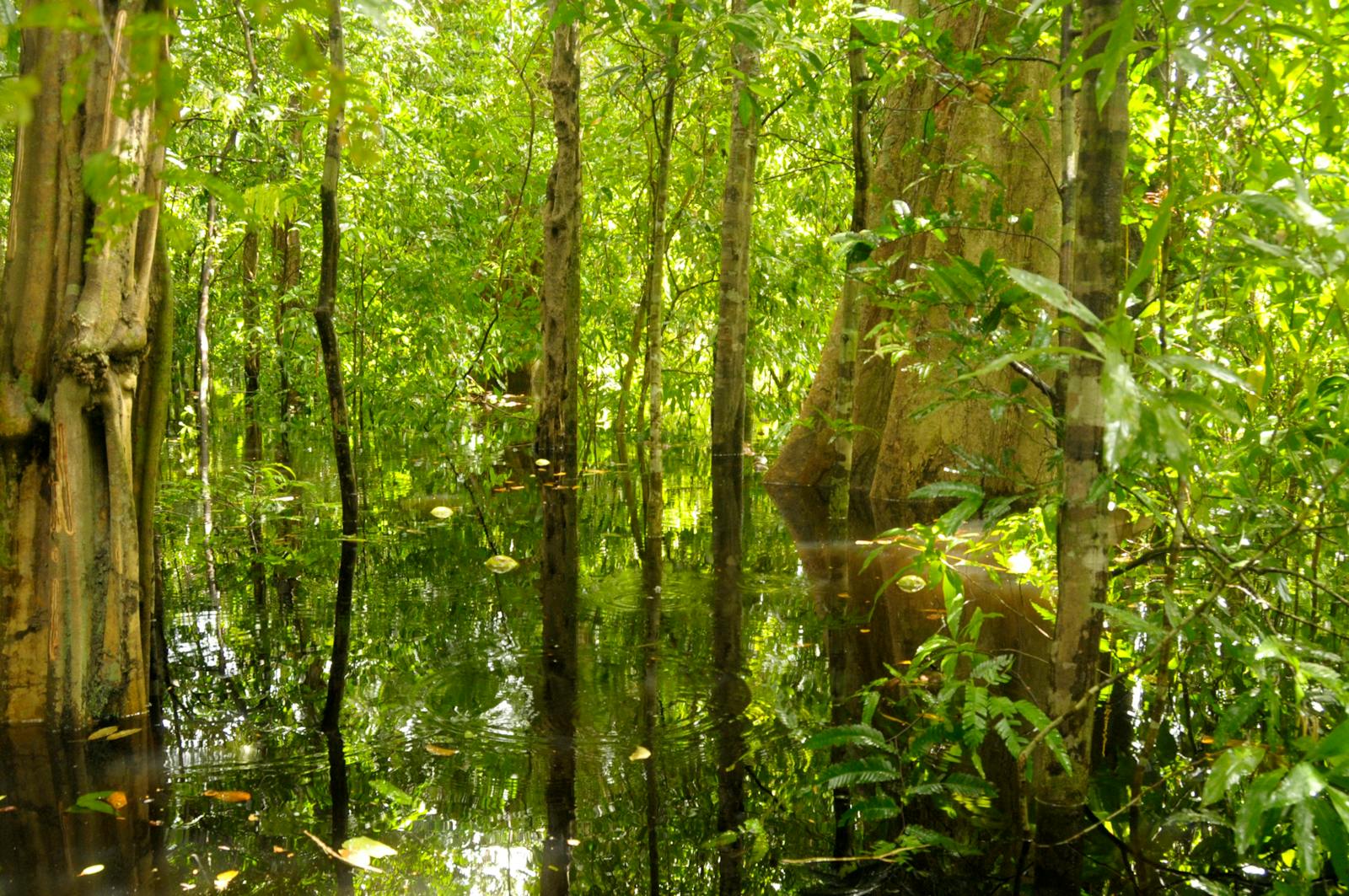Japurá-Solimões-Negro Moist Forests
The ecoregion’s land area is provided in units of 1,000 hectares. The conservation target is the Global Safety Net (GSN1) area for the given ecoregion. The protection level indicates the percentage of the GSN goal that is currently protected on a scale of 0-10. N/A means data is not available at this time.
Bioregion: Northern Amazonian Forests (NT20)
Realm: Southern America
Ecoregion Size (1000 ha):
27,025
Ecoregion ID:
473
Conservation Target:
96%
Protection Level:
6
States: Brazil, Colombia, Venezuela
The capybara is the largest rodent species in the world and thrives along the river’s edge in the Amazon and Orinoco Basins of South America. In fact, the capybara is semi-aquatic and will eat vegetation along the banks and in water, making it a favorite prey item for caiman and jaguars who also patrol the river’s edge looking for food. They are social, living in large extended family groups of up to 30 members with one dominant male, which can reach up to 66 kg body weight. Capybara are excellent swimmers and are emblematic of the Japurá-Solimões-Negro Moist Forests, where forests and rivers intertwine and are braided together, moving water from the Andes to the Atlantic Ocean.

The flagship species of the Japurá-Solimões-Negro Moist Forests ecoregion is the capybara.
The Japurá-Solimões-Negro moist forest ecoregion is situated on the lowland plateau in the central northern portion of the Amazon Basin in Brazil with tiny sections touching Colombia and Venezuela. The ecoregion lies entirely on lowland plateau. The climate is hot and humid. The mean monthly temperature ranges from 26° to 27°C, and average annual precipitation is 2,500 mm, falling seasonally. Two types of river define and dissect this region: blackwater (carrying few suspended solids, dark brown color) and whitewater (carrying a significant load of suspended solids, an ochre color). All of the major rivers and many of the tributaries overflow their banks annually following the high precipitation.
Várzea forests occur on the broad floodplains of whitewater rivers where the river sediments settle out on the landscape. Igapó forests occur along the flooded blackwater rivers, and the soils tend to be poor in nutrients and tree species lower in diversity. The variance in landscape: dry land forest (the majority), Várzea forest, and Igapó forest contribute to the hundreds of tree species in this region. Some dry land species of commercial value are the Brazil nut and rubber tree.

Squirrel monkey. Image credit: Geoff Gallice, Creative Commons
This is a region of high floral and faunal biodiversity. As many as 181 mammals inhabit these forests, along with 506 bird species. Larger mammals include tapir, capybara, jaguar, and primates including red-handed tamarin, red-faced spider monkey, common squirrel monkeys, and several species of capuchin. Reptiles and amphibians are also abundant. Some venomous snakes include fer-de-lance, palm pit-viper, coral snake, bushmaster, and boa constrictor. The rivers hold a range of fish, turtles, the Amazon river dolphin, and the Amazonian manatee. Prevalent birds are species of macaw, heron, tinamou, and parrot.
The Japurá-Solimões Moist Forests ecoregion is mostly intact, especially in the interior. Only about 3% of the ecoregion is deforested. No roads exist in this region except in the vicinity of state capital city Manaus; boat traffic, however, is heavy along the rivers. Mining, logging, agriculture, hunting, and fishing have resulted in deforested or degraded habitat along the rivers, threatening the populations of plants and animals there. The southern half of the Puinawai National Reserve below the Guainía River in Colombia protects a diversity of habitats. Also, this region hosts a large corridor of protected areas extending from the Mamirauá Sustainable Development Reserve in the Purus Várzea ecoregion through the Amanã Sustainable Development Reserve and Jaú National Park (Brazil’s largest national park).
Because of the presence of local communities in the reserves, the conservation goal is to manage the sustainable use of natural resources while protecting the rich flora and fauna. This ecoregion has over 12% of its area in strict-protection areas, over 22% in sustainable-use protected areas, and over 29% in Indigenous Territory.

Boa constrictor
Logging, mining, cattle ranching, uncontrolled fires, and urban development all pose threats to the environment. In the far eastern portion, at the border between Brazil and Colombia, gold mining is degrading some river habitats and destroying swaths of riverbank. Near Manaus, there is intense pressure on the environment from urban development, with deforestation, pollution, and water contamination among the top threats to wildlife and the environment. The valuable timber growing on the riverbanks is subject to unregulated logging.
The priority conservation action for the next decade will be to: 1) strengthen the administrative capacity of wildlife and timber trade authorities and protected area staff; 2) conduct basic research on populations of threatened species, especially fish and other little-known species; and 3) regulate the impact of the mining industry and incentivize reclamation of mined lands for restoration.
Citations
1. Sears, R. 2018. Northern South America: Northwestern Brazil, into eastern Colombia, and southwestern Venezuela. https://www.worldwildlife.org/ecoregions/nt0132 Accessed July 1, 2018.
2. Ferreira, L.V. 2001. A distribuição das unidades de conservação no Brasil e aidentificação de áreas prioritárias para a conservação da biodiversidade nas ecorregiões do bioma Amazônia. Ph.D. Dissertation, INPA/UA.
3. Ferreira, L. V. 2000. Effects of flooding duration on species richness, floristic composition and forest structure in river margin habitat in Amazonian blackwater floodplain forests: implications for future design of protected areas. Biodiversity and Conservation 9: 1-14.




